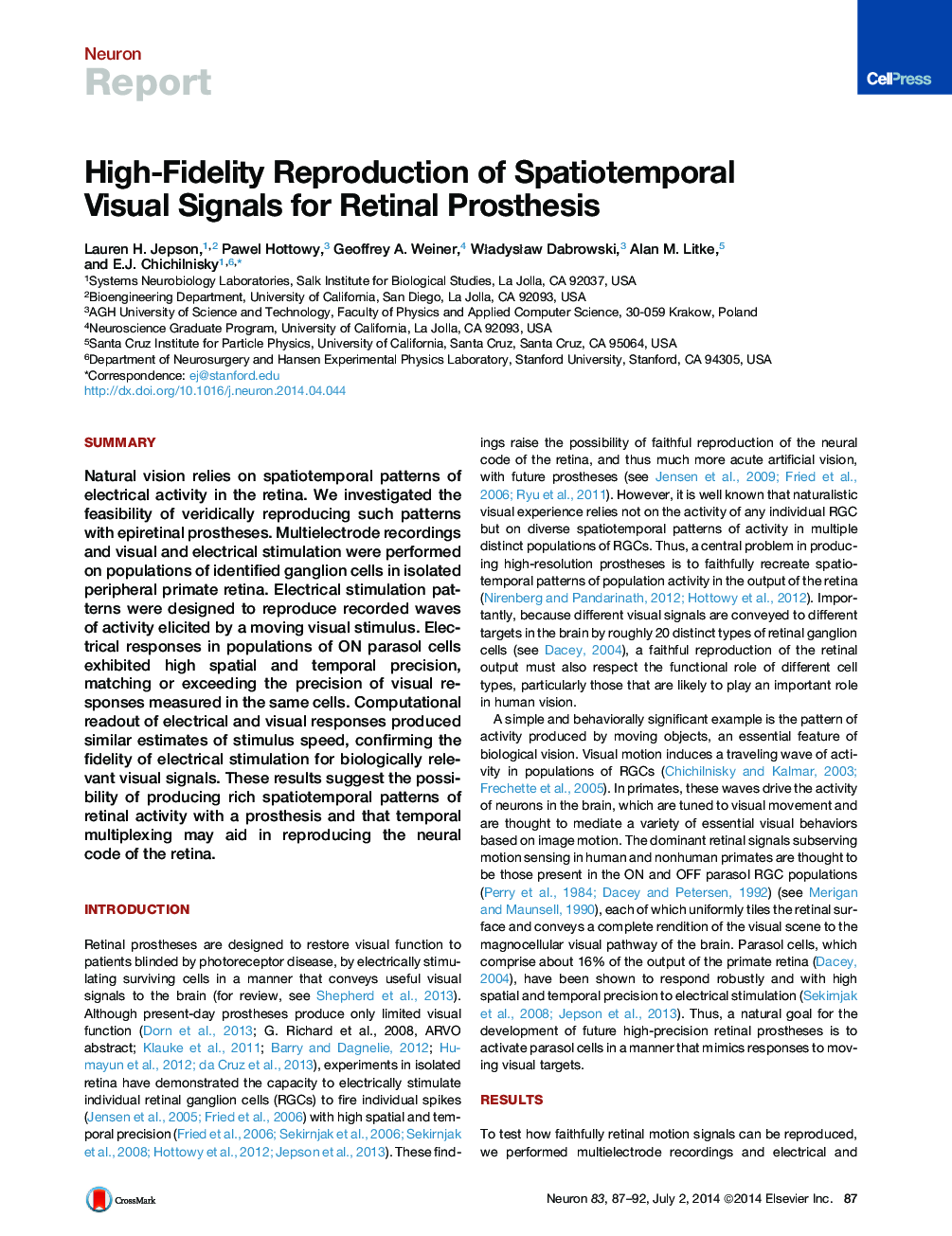| Article ID | Journal | Published Year | Pages | File Type |
|---|---|---|---|---|
| 4321107 | Neuron | 2014 | 6 Pages |
•Electrically reproduced spatiotemporal patterns of activity in primate retina•Temporal precision of electrically elicited spikes higher than visually elicited•Computational readout of movement speed similar for electrical and visual•Temporal precision suggests the possibility of time multiplexing in prostheses
SummaryNatural vision relies on spatiotemporal patterns of electrical activity in the retina. We investigated the feasibility of veridically reproducing such patterns with epiretinal prostheses. Multielectrode recordings and visual and electrical stimulation were performed on populations of identified ganglion cells in isolated peripheral primate retina. Electrical stimulation patterns were designed to reproduce recorded waves of activity elicited by a moving visual stimulus. Electrical responses in populations of ON parasol cells exhibited high spatial and temporal precision, matching or exceeding the precision of visual responses measured in the same cells. Computational readout of electrical and visual responses produced similar estimates of stimulus speed, confirming the fidelity of electrical stimulation for biologically relevant visual signals. These results suggest the possibility of producing rich spatiotemporal patterns of retinal activity with a prosthesis and that temporal multiplexing may aid in reproducing the neural code of the retina.
